The question of whether Ethiopia is rich or poor is not easily answered. The country presents a complex economic landscape that intertwines historical challenges with modern strides. Ethiopia, known for its ancient civilization, has undergone significant transitions over the decades.
Historically, Ethiopia has faced numerous hardships, including drought, political instability, and economic constraints. However, the country has also shown remarkable resilience and potential for growth. So, what does the reality of Ethiopia’s economy look like today?
- Historical Context and Economic Evolution
- Current Economic Indicators
- Factors Contributing to Wealth
- Challenges and Possible Solutions
Historical Context and Economic Evolution
Exploring the economic history of Ethiopia takes us back to the ancient era when the Aksumite Empire thrived. The Aksum Kingdom, one of the greatest civilizations of the ancient world, minted its own coins and established vibrant trade routes that connected it with Egypt, Rome, Persia, and India. This period marked the golden era of Ethiopian trade and economic prosperity.
However, the fall of Aksum and subsequent invasions disrupted this prosperity. Fast forward to the 20th century, Ethiopia underwent significant changes. The reign of Emperor Haile Selassie, beginning in 1930, aimed to modernize the country. Despite his efforts, the subsequent socialist Derg regime (1974-1991) nationalized land and industries, leading to economic stagnation and severe famine in the 1980s. International aid flowed in, but it merely acted as a bandage to the deeper issues afflicting the nation.
Post-Derg Ethiopia saw a shift toward a free market-oriented economy. The government adopted policies that opened up various sectors to privatization and foreign direct investment. These moves brought a period of recovery and rapid economic growth in the 2000s. Ethiopia's average annual GDP growth rate soared, often hitting double digits, and the World Bank termed it as one of the fastest-growing economies in the world. The country embarked on ambitious infrastructure projects like the Grand Ethiopian Renaissance Dam, which promises to bolster its economic standing further.
Diving deeper, Ethiopia’s growth has been driven significantly by its focus on agricultural and service sectors. Agriculture, employing a large portion of the population, represents about a third of the GDP. The diversity in exports, including coffee, flowers, and seeds, plays a crucial role. The service sector, particularly transportation and communications, has also seen notable advancements, contributing significantly to the economic landscape. As of now, Addis Ababa, the capital city, has evolved into a dynamic hub of development with modern high-rises and extensive road networks.
Nevertheless, economic progress comes with its own set of challenges. Ethiopia’s economic journey is marred with political instabilities, conflicts, and climate change impacting agricultural productivity. Historical underdevelopment has left an infrastructure gap, requiring continuous investment. “Understanding Ethiopia's economic evolution necessitates recognizing both its rich history and the hurdles it faces today,” says economist Dr. Lemma Senbet.
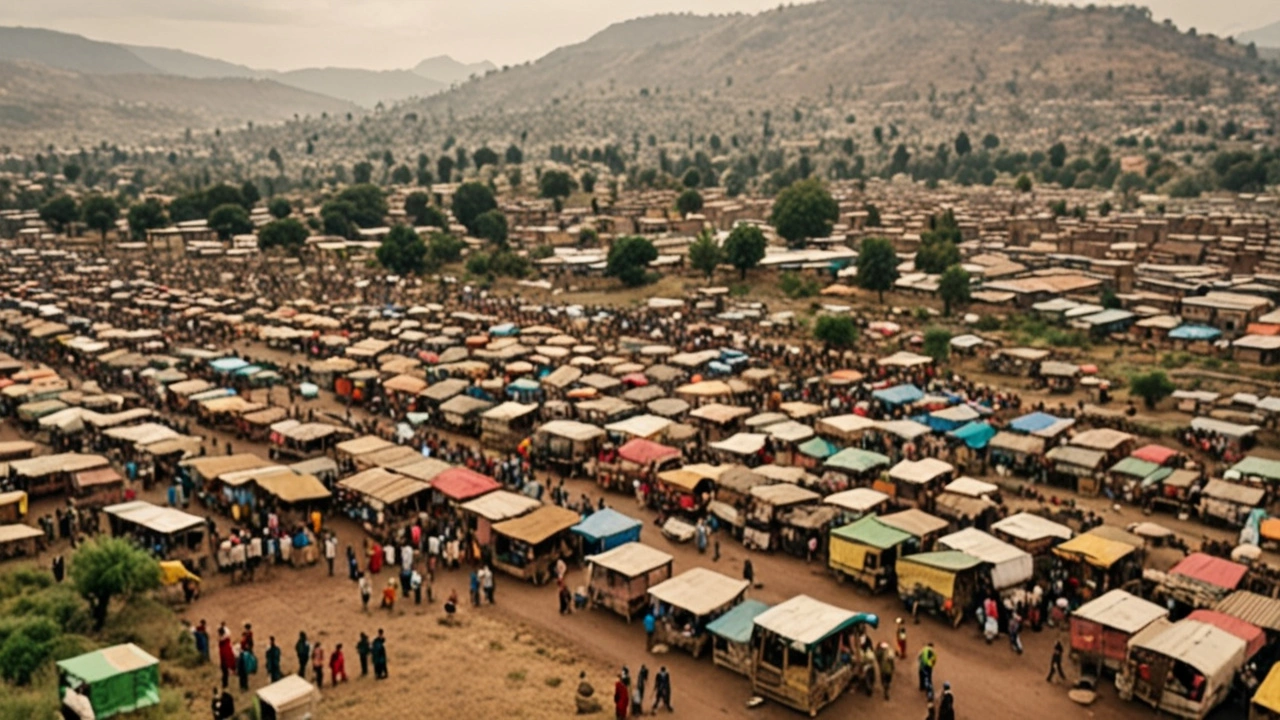
Current Economic Indicators
Ethiopia's economy has been a subject of both praise and concern in the global community. On one hand, it has shown impressive growth rates over the past decade. On the other, challenges such as inflation and unemployment persist. With a population of over 120 million people, Ethiopia has one of the largest labor forces in Africa. This immense human capital is seen as both an asset and a challenge, depending on how it's managed.
According to the World Bank, Ethiopia's GDP has been growing at an average annual rate of around 9% between 2010 and 2020. This growth is largely attributed to public investment in infrastructure, such as roads, railways, and hydropower projects. The government has been proactive in creating an environment that encourages foreign direct investment. Industries like textiles, agriculture, and manufacturing have attracted investments from countries like China, Turkey, and India.
Despite the impressive GDP growth, inflation remains a critical issue. The National Bank of Ethiopia reported an annual inflation rate of approximately 20% in 2023. This high inflation affects the cost of living, making essential goods like food and clothing expensive for the average Ethiopian. The high inflation rate is partly due to supply chain disruptions and partly due to rising global prices for commodities like fuel.
Unemployment is another pressing issue. While the urban areas, particularly Addis Ababa, have seen improvements in job creation, rural areas still suffer from high unemployment and underemployment rates. According to Ethiopia's Central Statistical Agency, the unemployment rate in urban areas was around 19% as of early 2024. Rural areas, which make up a significant portion of the population, often rely on subsistence farming, which is vulnerable to climatic changes.
Foreign aid and remittances also play a crucial role in Ethiopia's economy. International organizations like the International Monetary Fund (IMF) and humanitarian agencies provide financial assistance targeted at development projects and poverty alleviation. Remittances from the Ethiopian diaspora contribute significantly to household incomes and are an essential source of foreign exchange earnings for the country.
"Ethiopia stands at the cusp of transformation, balancing between rapid economic advancements and the persistent challenges of poverty and unemployment," says Dr. Abiy Teklay, an economist at Addis Ababa University.
In recent years, the government has also focused on improving the Ease of Doing Business in Ethiopia. Reforms have been put in place to streamline business registration processes, improve access to finance, and enhance legal frameworks. These initiatives are aimed at fostering a more business-friendly environment, thereby stimulating both local and foreign investment.
However, the current economic indicators paint a mixed picture. While Ethiopia has made substantial gains in infrastructure and economic growth, the challenges of inflation, unemployment, and poverty persist. Addressing these issues will be crucial for the country to sustain its economic momentum and ensure that the growth benefits its vast population.
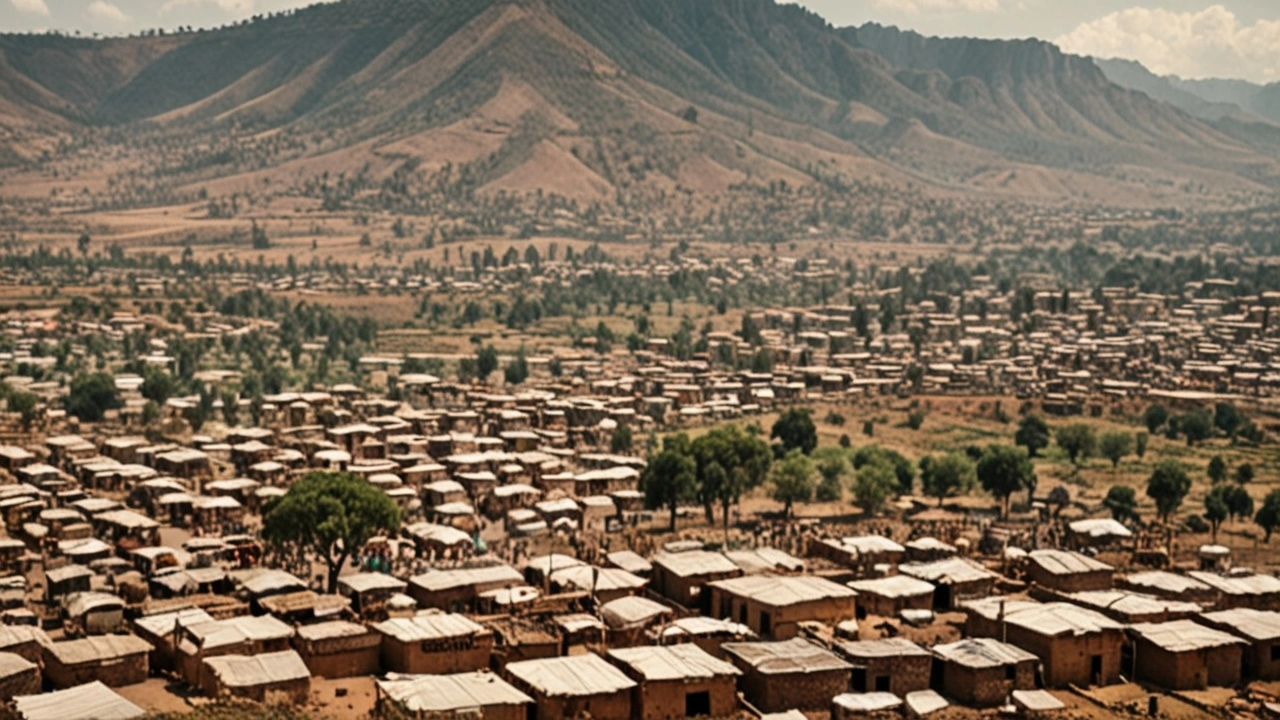
Factors Contributing to Wealth
Ethiopia’s journey towards economic wealth is marked by various factors that help in shaping the financial landscape of the nation. One of the critical elements is the country's agricultural sector. Agriculture remains a cornerstone of Ethiopia's economy, employing around 70% of the population and contributing significantly to GDP. The fertile lands along the Rift Valley and Blue Nile Basin are pivotal for the production of coffee, teff, and other essential crops. Reports indicate that Ethiopia is Africa’s largest producer of coffee, which is both a substantial export product and integral to the social fabric of the nation.
Another significant contributor to Ethiopia's wealth is its focus on infrastructure development. The Ethiopian government has initiated various infrastructure projects, such as the Grand Ethiopian Renaissance Dam (GERD), which is set to be Africa's largest hydroelectric power plant upon completion. These efforts aim to boost domestic energy generation and create export opportunities. The improvement of road networks, railways connecting the capital Addis Ababa to the port of Djibouti, and development of industrial parks have also played a vital role in improving trade logistics and economic growth.
The service sector, particularly telecommunications and financial services, is another area where Ethiopia is gaining ground. The liberalization of these sectors has led to an influx of private investments, promoting innovation and enhanced services. Companies like Ethio Telecom are crucial in expanding internet access, leading to increased opportunities for businesses and education.
Foreign Direct Investment (FDI) has further fueled economic advancements in the nation. The ease of doing business is improving, drawing in investments from countries like China, Turkey, and India. These investments are mainly in manufacturing, agriculture, and infrastructure, creating numerous job opportunities and contributing to wealth accumulation. Measures to streamline bureaucracy and offer incentives to foreign companies have played a pivotal role in these achievements.
Human capital is also a valuable asset. The Ethiopian government has made significant investments in education, particularly in STEM (Science, Technology, Engineering, and Mathematics) fields. This focus aims to build a knowledgeable workforce capable of driving technological and industrial advancements. Institutions like the Addis Ababa University and various technical colleges are at the forefront of this educational revolution.
According to the World Bank, “Ethiopia's economic reforms have been instrumental in its transition towards a productive economy with diversified investments and improved services.”
Ethiopia's cultural assets and tourism potential also contribute to its wealth. From the ancient rock-hewn churches of Lalibela to the historical Axumite kingdom and the natural beauty of the Danakil Depression, tourism represents a growing sector with immense potential. Efforts to promote these treasures are increasingly attracting international visitors, providing a significant boost to local economies.
Finally, remittances from the Ethiopian diaspora around the globe add a notable economic boost. Many Ethiopians working abroad send money back home, which supports local economies and helps in the construction of homes, businesses, and education expenses. These funds are vital for the financial stability and development of many families in Ethiopia.
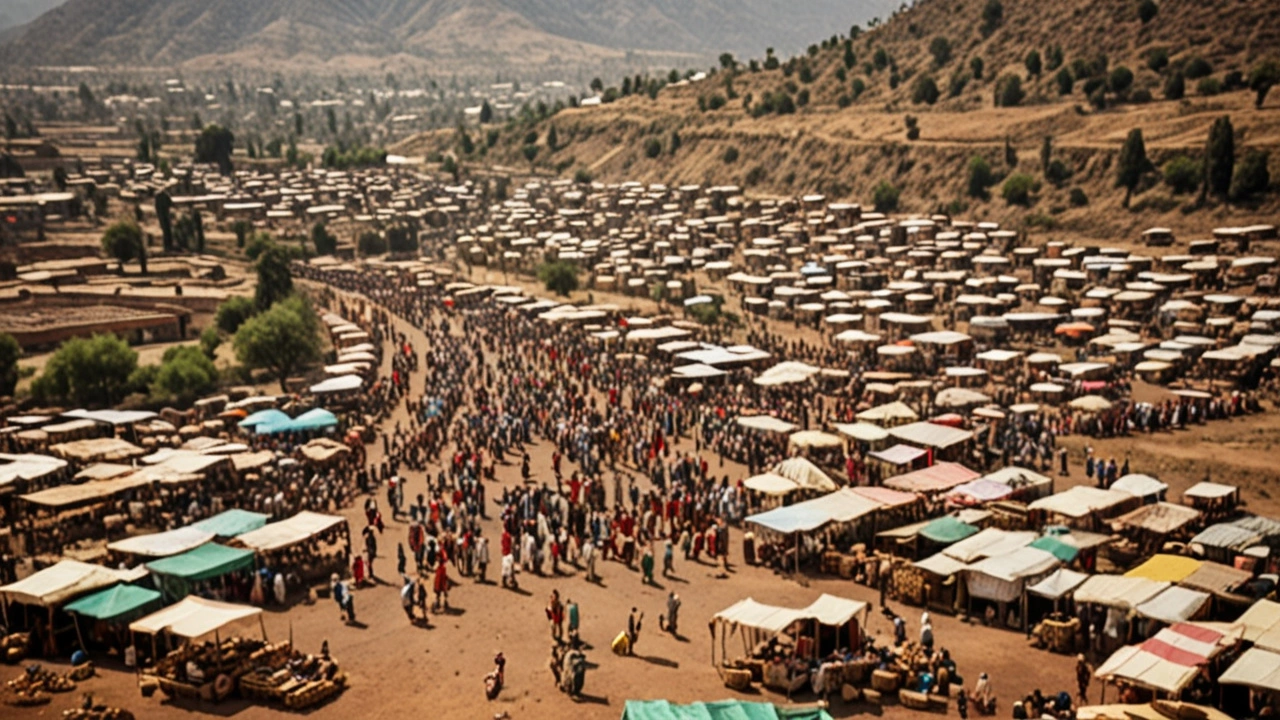
Challenges and Possible Solutions
Ethiopia, like many countries striving for economic balance, encounters numerous challenges that hinder its path to prosperity. One of the fundamental issues is poverty. Despite notable growth, the benefits have not evenly reached all layers of society. Many Ethiopians still live below the poverty line, struggling to meet basic needs such as food, water, and shelter. This uneven development is rooted in historical disparities, often exacerbated by recent climatic challenges like prolonged droughts that have affected agriculture, a cornerstone of Ethiopia's economy.
Political instability has also played a significant role. For decades, Ethiopia has seen periods of unrest and conflict, which disrupt economic activities and deter foreign investment. Stability is crucial for fostering a business-friendly environment, and without it, both local entrepreneurs and international investors may find it difficult to commit resources to the nation. Additionally, the regulatory framework in Ethiopia can be cumbersome, making it challenging to start and sustain businesses. Streamlining regulations and creating a transparent legal system could greatly benefit economic activities.
Infrastructure development remains another critical area. While Ethiopia has made impressive strides in improving its infrastructure, there are still gaps, particularly in rural areas. Poor road networks, limited access to electricity, and inadequate healthcare facilities hamper economic progress. To pave the way for development, continued investment in modern infrastructure is essential. This would not only create jobs but also improve the overall quality of life, potentially attracting more investments from abroad.
Education and skill development are key areas where Ethiopia can build its future wealth. Currently, there is a considerable mismatch between the skill set of the labor force and the requirements of the market. Investing in quality education and vocational training programs can equip young Ethiopians with the skills needed to thrive in an evolving job market. Engaging in partnerships with private sector organizations for skill development and creating internship opportunities can also bridge this gap.
To address these issues, there are several potential solutions. Enhancing agricultural innovation to combat the effects of climate change can ensure more resilient farming practices. Using drought-resistant crops, investing in irrigation systems, and applying modern agricultural techniques can significantly boost productivity. Equally important is the political will to enforce stability and implement policies that support inclusive economic growth. By fostering an environment of trust and safety, Ethiopia can attract the much-needed investment to drive its economy forward.
As former UN Secretary-General Kofi Annan once said,
"To live is to choose. But to choose well, you must know who you are and what you stand for, where you want to go and why you want to get there."Ethiopia stands at a threshold where the choices made now will shape its economic landscape for generations to come. With targeted efforts in education, infrastructure, and political stability, coupled with innovations in agriculture, the country has the potential to transform its challenges into opportunities, paving the way for a more prosperous future.
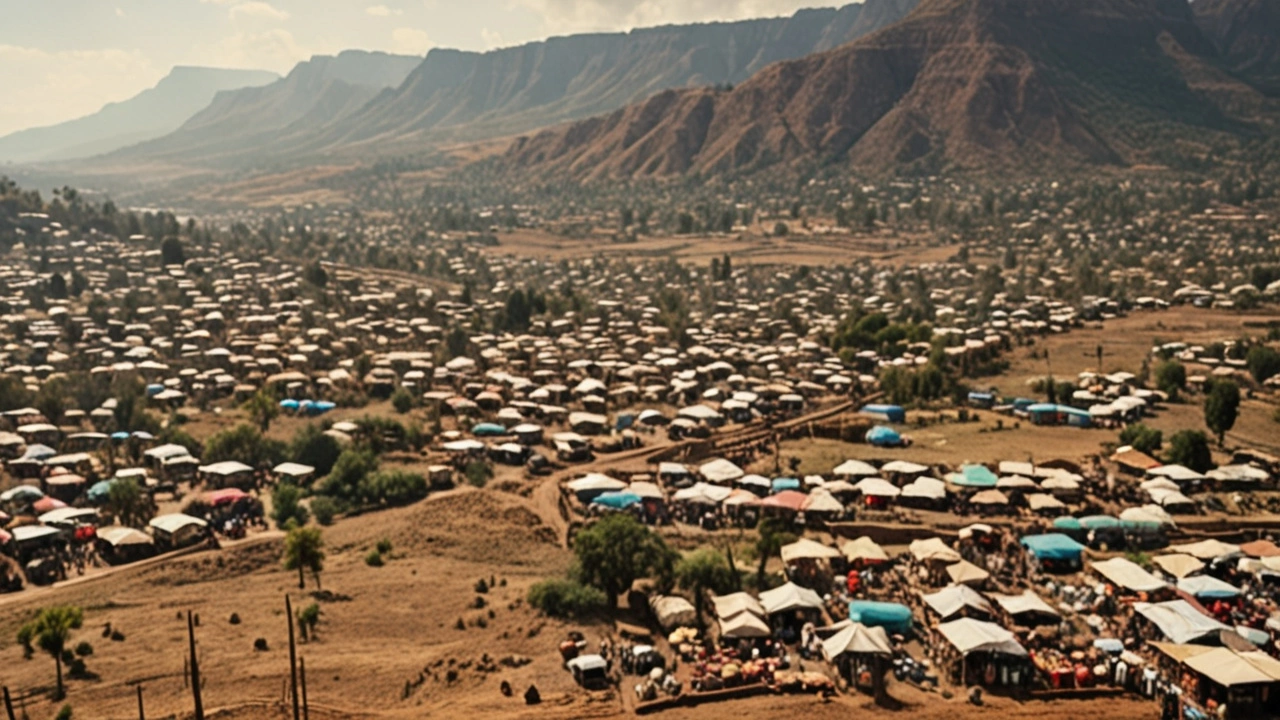
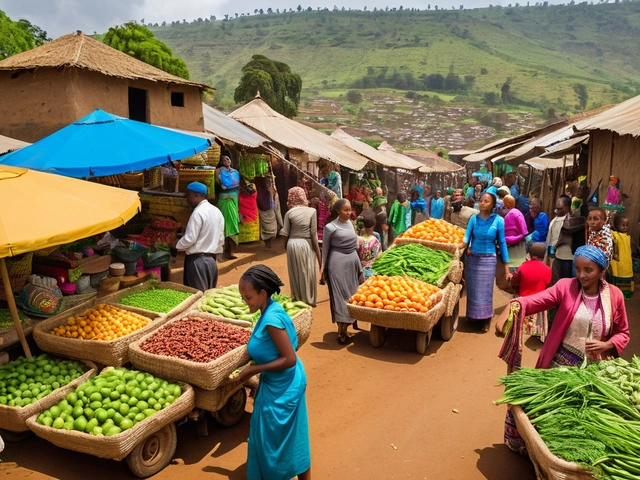 Ways People Earn a Living in Ethiopia: Unique Opportunities and Challenges
Ways People Earn a Living in Ethiopia: Unique Opportunities and Challenges
 Why Ethiopia is Thriving: Unveiling the Secrets Behind Its Success
Why Ethiopia is Thriving: Unveiling the Secrets Behind Its Success
 Exploring Ethiopia's Economic Backbone: Top Exports Driving Growth
Exploring Ethiopia's Economic Backbone: Top Exports Driving Growth
 Starting a Small Business in Ethiopia: Key Steps and Insights
Starting a Small Business in Ethiopia: Key Steps and Insights
 Cost of Living in Ethiopia 2024: Expenses for a Comfortable Lifestyle
Cost of Living in Ethiopia 2024: Expenses for a Comfortable Lifestyle
Divyaa Patel
July 13, 2024 AT 21:46Wealth is a mirage when the masses starve.
Larry Keaton
July 19, 2024 AT 16:40Look, Ethiopia’s GDP numbers look shiny on paper, but the everyday reality tells a different story.
The infrastructure projects like the dam are impressive, yet they don’t instantly put food on the table for a farmer in the highlands.
The inflation rate hovering around twenty percent means that even if wages rise, purchasing power still drops.
Urban jobs are sprouting in Addis, but millions are still tethered to subsistence agriculture vulnerable to drought.
Foreign direct investment pours in, but profits often flow back to the investors, not the local workers.
Education reforms are picking up, but the mismatch between skills taught and market needs persists.
Health services in rural zones remain scarce, which drags down human capital development.
The government’s ease‑of‑doing‑business reforms are a step forward, yet bureaucracy still slows startups.
Remittances from the diaspora are a lifeline for many families, cushioning some of the poverty shock.
Climate change is turning once‑reliable rain patterns into erratic spells, threatening crop yields.
Political stability is essential; any flare‑up can scare off the very investors the country hopes to attract.
Despite double‑digit growth, the benefits are unevenly distributed, leaving a stark urban–rural divide.
Social safety nets are thin, and when a drought hits, the safety net can break entirely.
All these factors combine into a paradox: macro‑level growth with micro‑level struggle.
So, the answer isn’t black or white; it’s a complex shade of “progress with pain”.
Liliana Carranza
July 25, 2024 AT 11:33Ethiopia’s coffee export is a cultural treasure and a solid cash generator, but smallholder farmers often see only a slice of that profit.
Meanwhile, the Grand Ethiopian Renaissance Dam promises abundant electricity, yet its completion timeline keeps shifting.
Investments in textile factories are kicking off, offering hope for job creation, especially for women.
But without reliable transport networks to move goods, these factories can’t hit full capacity.
Balancing rapid growth with equitable distribution is the real challenge ahead.
We need policies that lift the entire population, not just the elites.
Jeff Byrd
July 31, 2024 AT 06:26Oh great, another dam to “solve” all our problems.
Joel Watson
August 6, 2024 AT 01:20The macroeconomic indicators, notably the 9% annual GDP growth, suggest a robust expansion trajectory, yet the concomitant inflationary pressure of approximately 20% erodes real incomes, thereby attenuating the perceived benefits of such growth.
Chirag P
August 11, 2024 AT 20:13Stability is the foundation; without it, no investment will stick.
RUBEN INGA NUÑEZ
August 17, 2024 AT 15:06While foreign direct investment inflows have increased, the regulatory environment must be further streamlined to reduce entry barriers for SMEs, which constitute the backbone of sustainable economic development.
Michelle Warren
August 23, 2024 AT 10:00the whole thing is just a hype
Christopher Boles
August 29, 2024 AT 04:53It’s awesome to see the country building roads and schools; those are the stepping stones for a brighter future for everyone.
Crystal Novotny
September 3, 2024 AT 23:46Ethiopia’s story is not just about numbers it is about people striving against odds it is easy to romanticize the ancient empire but the present realities are harsh the agricultural sector feeds most of the nation yet it is at the mercy of fickle rains the dam project promises power but its benefits may not trickle down equally the youth are hungry for jobs and education yet opportunities remain scarce we cannot ignore the stark urban‑rural divide the inflation rate eats away at wages the government’s reforms are commendable but implementation lags the diaspora sends money that keeps families afloat but it is not a sustainable development model the climate crisis looms over crop yields and water supplies the political landscape remains fragile any misstep could undo progress the world watches Ethiopia’s rise but must also support its challenges the path forward requires inclusive policies that prioritize the poor and marginalised voices
Reagan Traphagen
September 9, 2024 AT 18:40Don’t be fooled by the glossy official stats; there’s a covert agenda pushing debt traps through these “development” loans.
mark sweeney
September 15, 2024 AT 13:33Sure, but even the so‑called debt traps can be navigated if the nation insists on transparency and renegotiates terms wisely.
randy mcgrath
September 21, 2024 AT 08:26The coffee supply chain could use more fair‑trade certifications to ensure farmers get a fair share of the profits.
Frankie Mobley
September 27, 2024 AT 03:20Exactly, fair‑trade can boost incomes.
ashli john
October 2, 2024 AT 22:13The high growth numbers sound impressive but without addressing inflation, the average citizen won’t feel any improvement.
Kim Chase
October 8, 2024 AT 17:06True, price stability is key; maybe the central bank should tighten monetary policy while still supporting growth.
David Werner
October 14, 2024 AT 12:00Infrastructure like roads and schools looks great on the ground, but there’s a hidden layer that most people overlook. The contracts awarding these projects often go to companies with political connections rather than the most qualified bidders. When corruption seeps into procurement, the quality of construction suffers, leading to premature deterioration. This creates a cycle where funds are repeatedly spent on repairs instead of new builds. Moreover, the labor force hired for these projects is frequently underpaid, perpetuating low wage standards. The government’s push for rapid development can sideline environmental assessments, risking long‑term ecological damage. Deforestation for road expansion reduces carbon sinks, exacerbating climate change impacts already felt by farmers. Schools are being built, yet many lack trained teachers, turning bricks into empty classrooms. The curriculum often remains outdated, failing to equip students with modern skills. The promise of jobs from these projects is real, but many positions are temporary, vanishing once the project ends. This leaves workers scrambling for the next gig without any safety net. Investment influxes are sometimes channeled into sectors that don’t align with local needs, creating economic imbalances. Rural communities continue to depend on subsistence farming while urban areas attract the bulk of resources. The disparity widens, fueling migration and urban overcrowding. In short, without robust oversight, these shiny projects may do more harm than good for the average Ethiopian.
Paul KEIL
October 20, 2024 AT 06:53Strategic asset allocation and KPI-driven ROI assessments are essential; otherwise you’re just spouting vanity metrics.
Horace Wormely
October 26, 2024 AT 01:46The sentence structure is correct, but the statement lacks substantive evidence.
christine mae cotejo
October 31, 2024 AT 19:40The metaphor of wealth as a mirage captures the paradox confronting Ethiopia, but let’s unpack what that truly entails for its people. First, the nation’s GDP growth, while statistically impressive, masks deep‑seated income inequality, with the top quintile capturing a disproportionate share of new wealth. Second, inflation erodes purchasing power, meaning that nominal wage gains often translate into stagnant or even reduced real incomes for households. Third, access to essential services-healthcare, clean water, education-remains uneven, especially between urban centers like Addis Ababa and remote rural areas. Fourth, the agricultural sector, which employs roughly 70 percent of the population, is subject to climate volatility, and without modern irrigation and resilient crop varieties, yields fluctuate dramatically year to year. Fifth, infrastructure projects such as the Grand Ethiopian Renaissance Dam promise future energy security, yet their immediate benefits are limited for the average citizen who still struggles with unreliable electricity. Sixth, foreign direct investment fuels certain industries, but the repatriation of profits can result in capital outflows rather than domestic reinvestment. Seventh, remittances from the diaspora provide a crucial safety net, yet they also underscore a systemic reliance on external income sources. Eighth, governance challenges, including bureaucratic red tape and occasional political instability, deter both domestic entrepreneurship and foreign investors. Ninth, social safety nets are still nascent; during droughts or economic shocks, many families fall back on informal support networks, which are not always sufficient. Tenth, the education system is expanding, but the quality and relevance of curricula frequently lag behind market demands, producing a workforce that may be underqualified for emerging sectors. Eleventh, gender disparities persist, with women often facing barriers to labor market participation and land ownership. Twelfth, urban migration continues to swell city populations, straining housing and public services, while rural depopulation threatens agricultural productivity. Thirteenth, the legal framework for business operations is improving, yet inconsistencies and corruption still pose significant obstacles. Fourteenth, technology adoption is accelerating, but internet penetration remains low in many regions, limiting access to information and digital economies. Fifteenth, the cultural heritage and tourism potential are immense, but investment in this sector is still modest compared to its possible contribution to GDP. Taken together, these multifaceted dynamics illustrate that Ethiopia’s economic picture is neither wholly affluent nor entirely destitute; it is a tapestry of progress interwoven with persistent hardship.